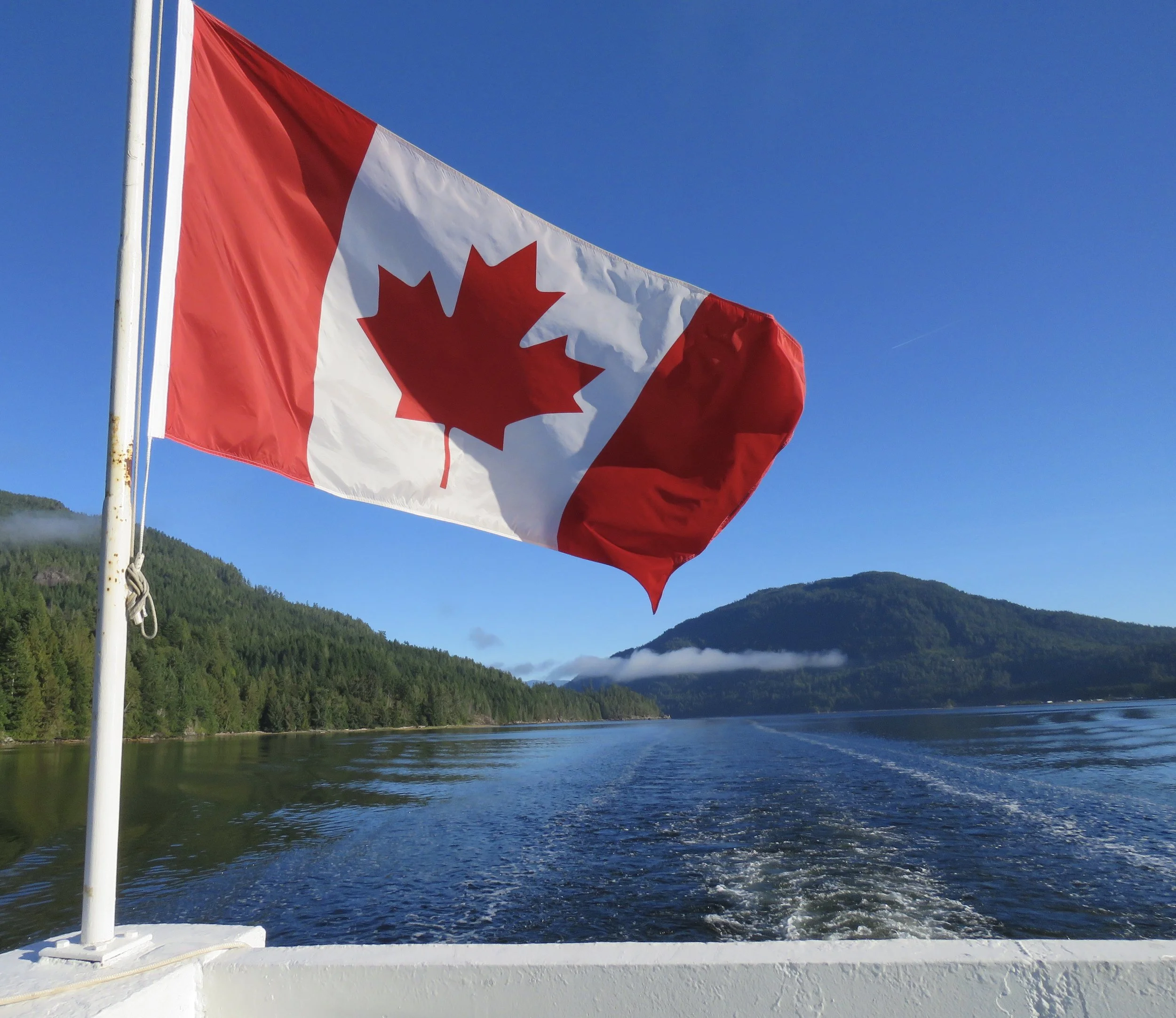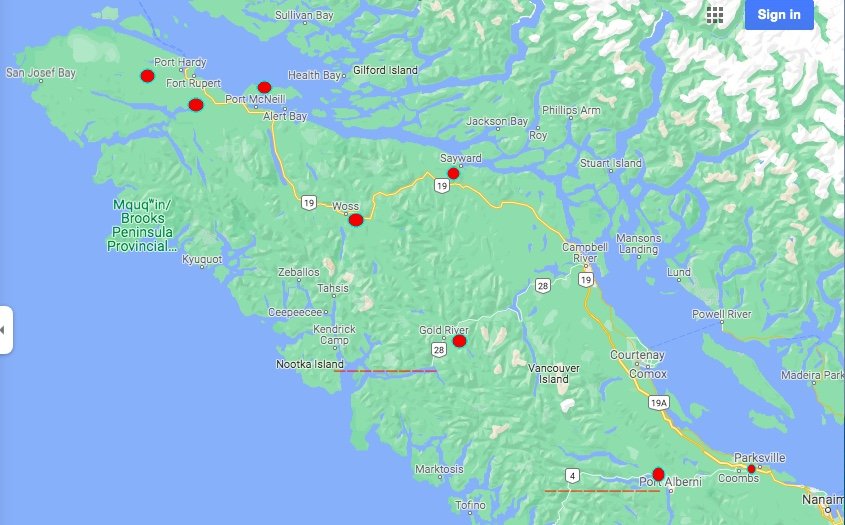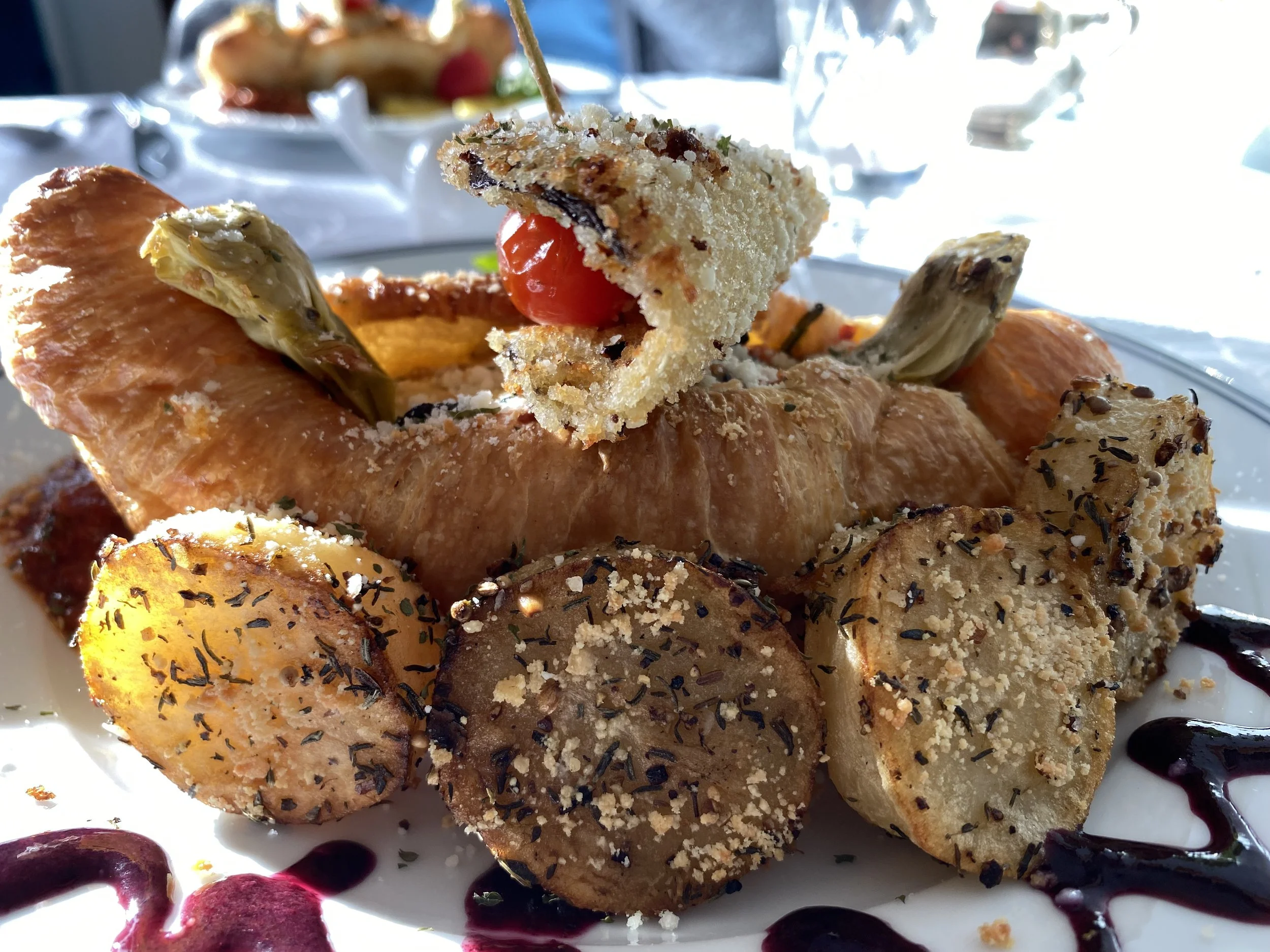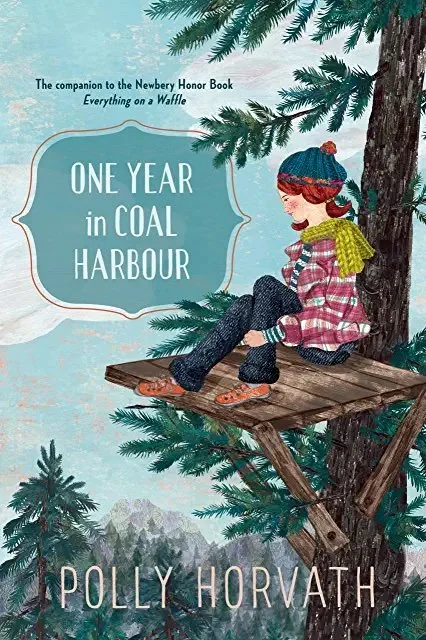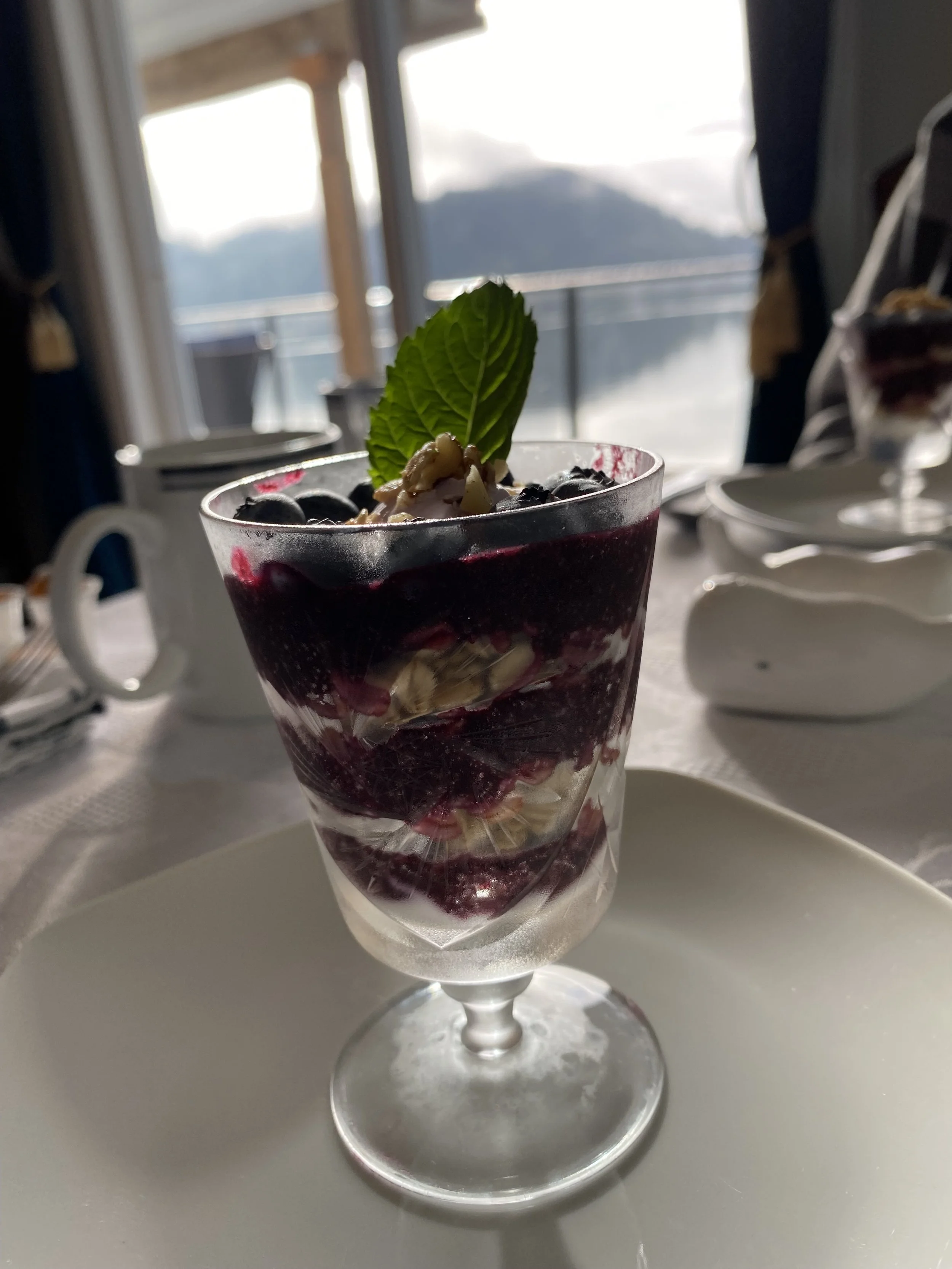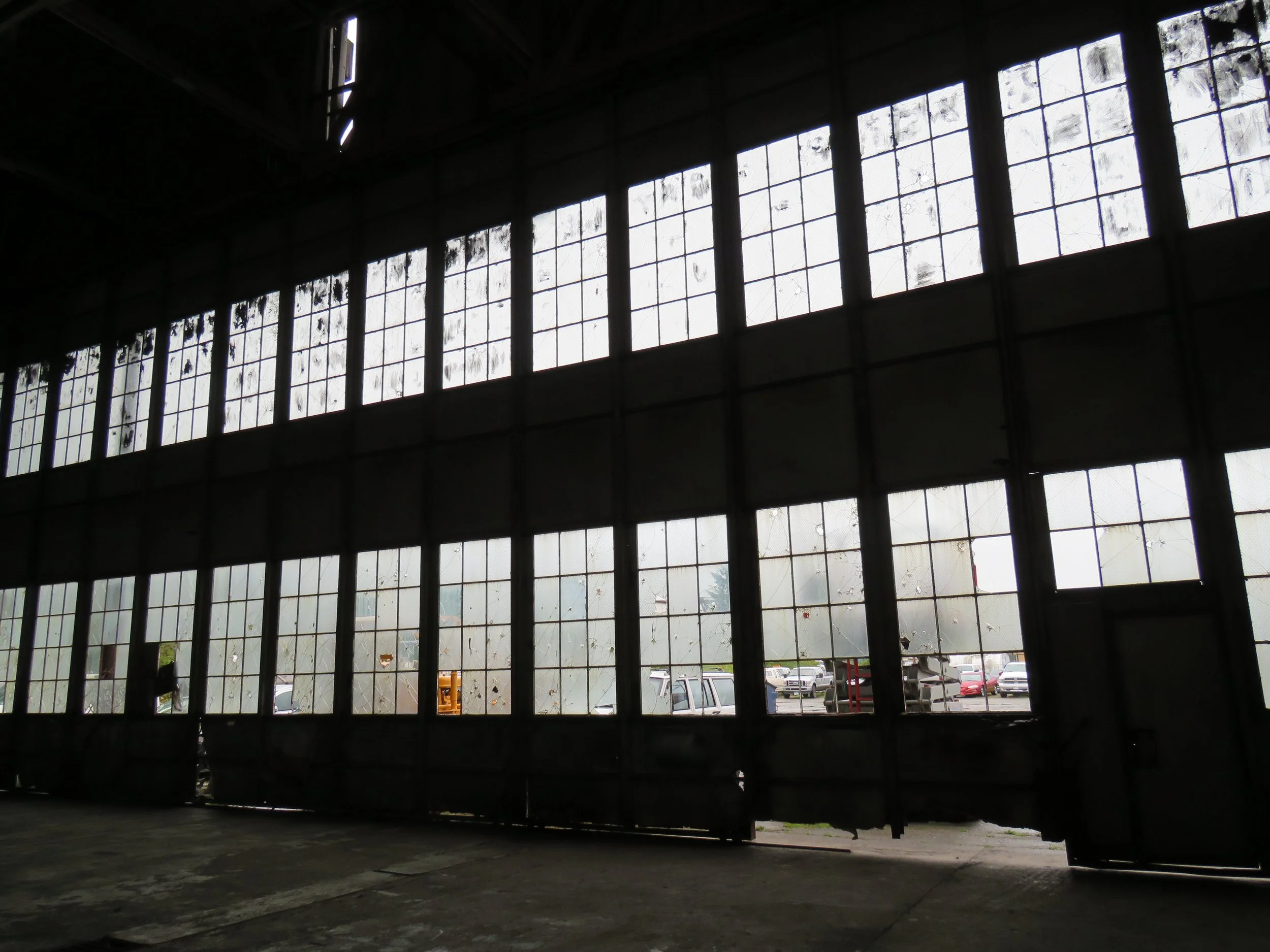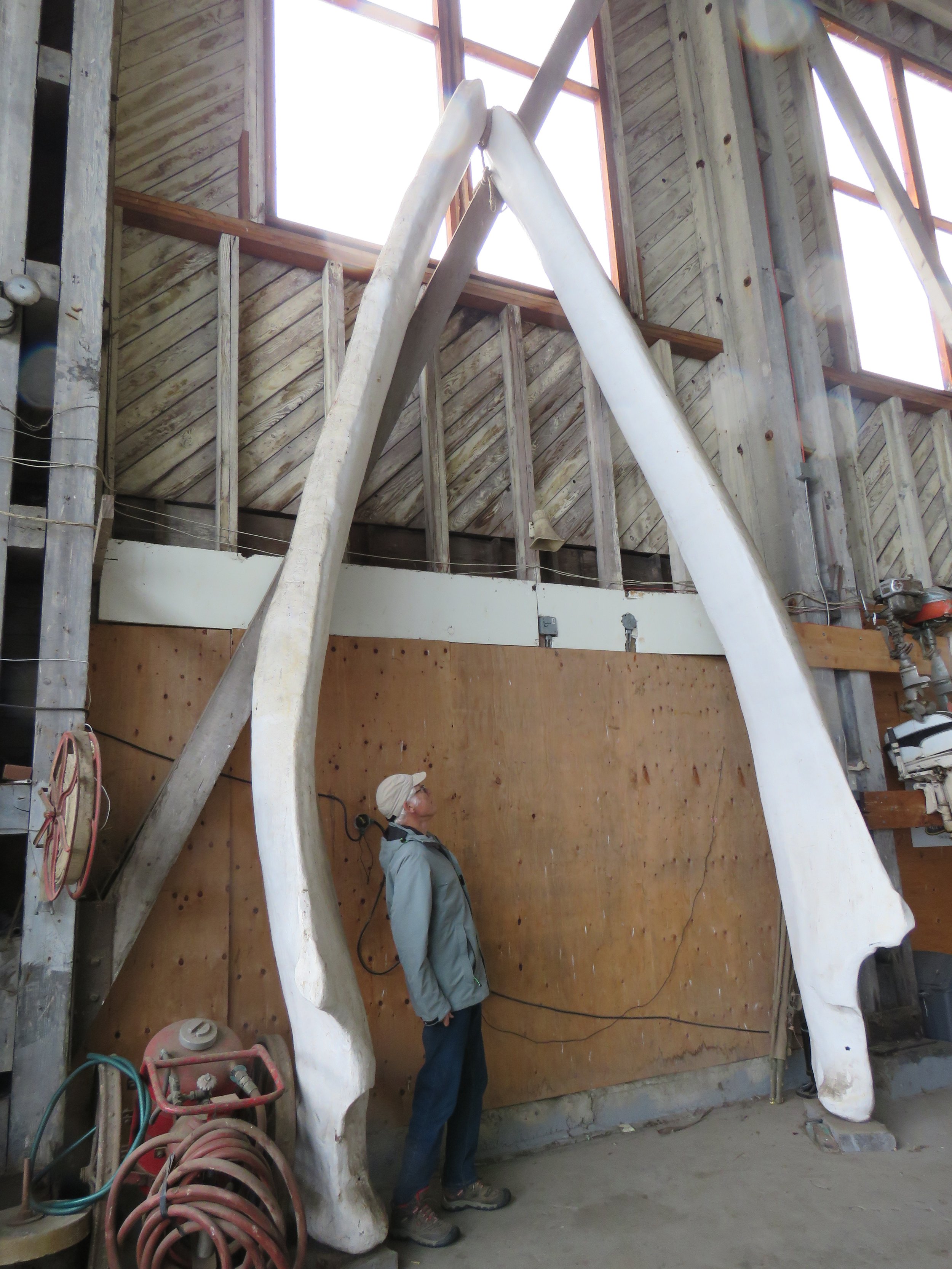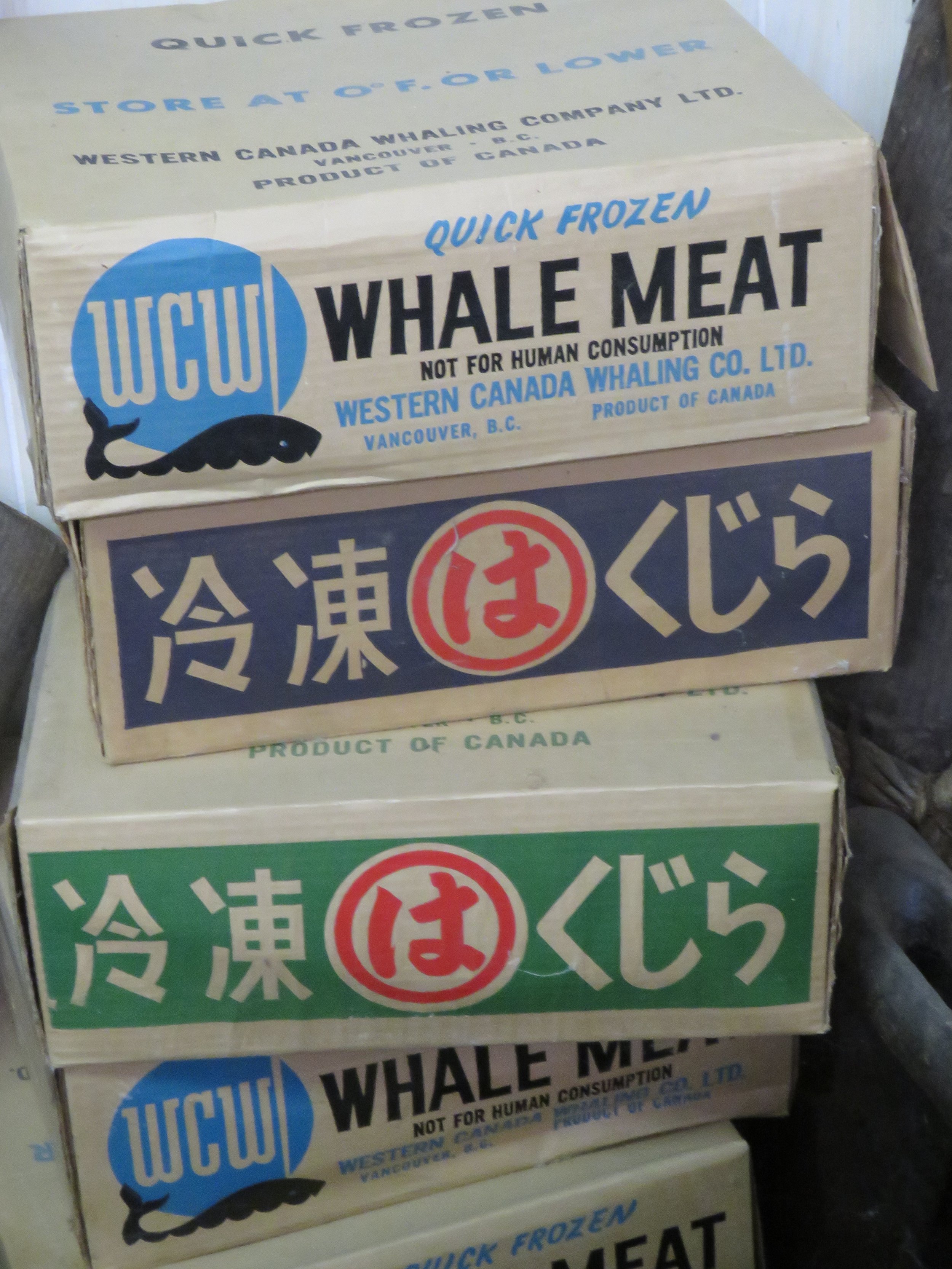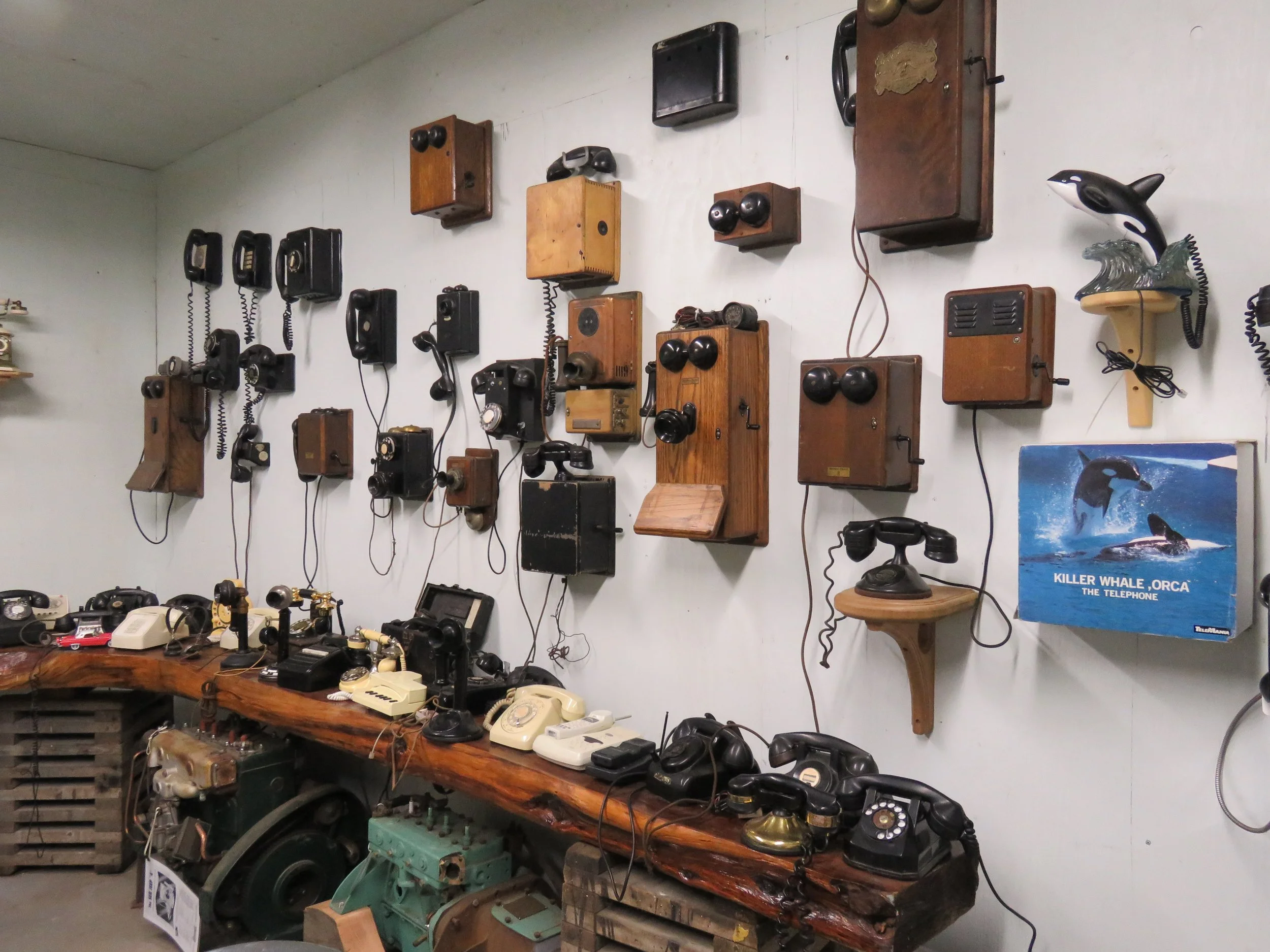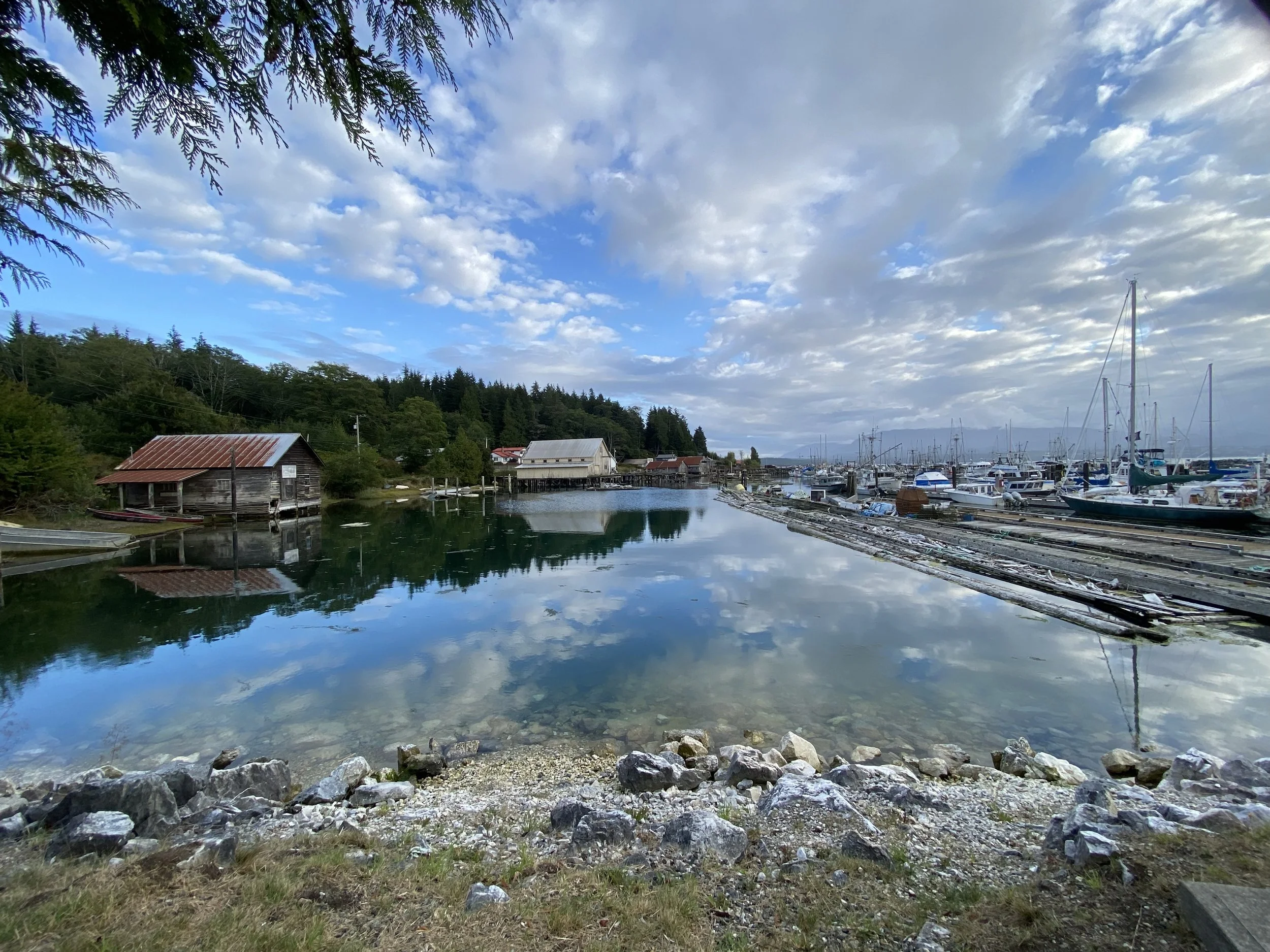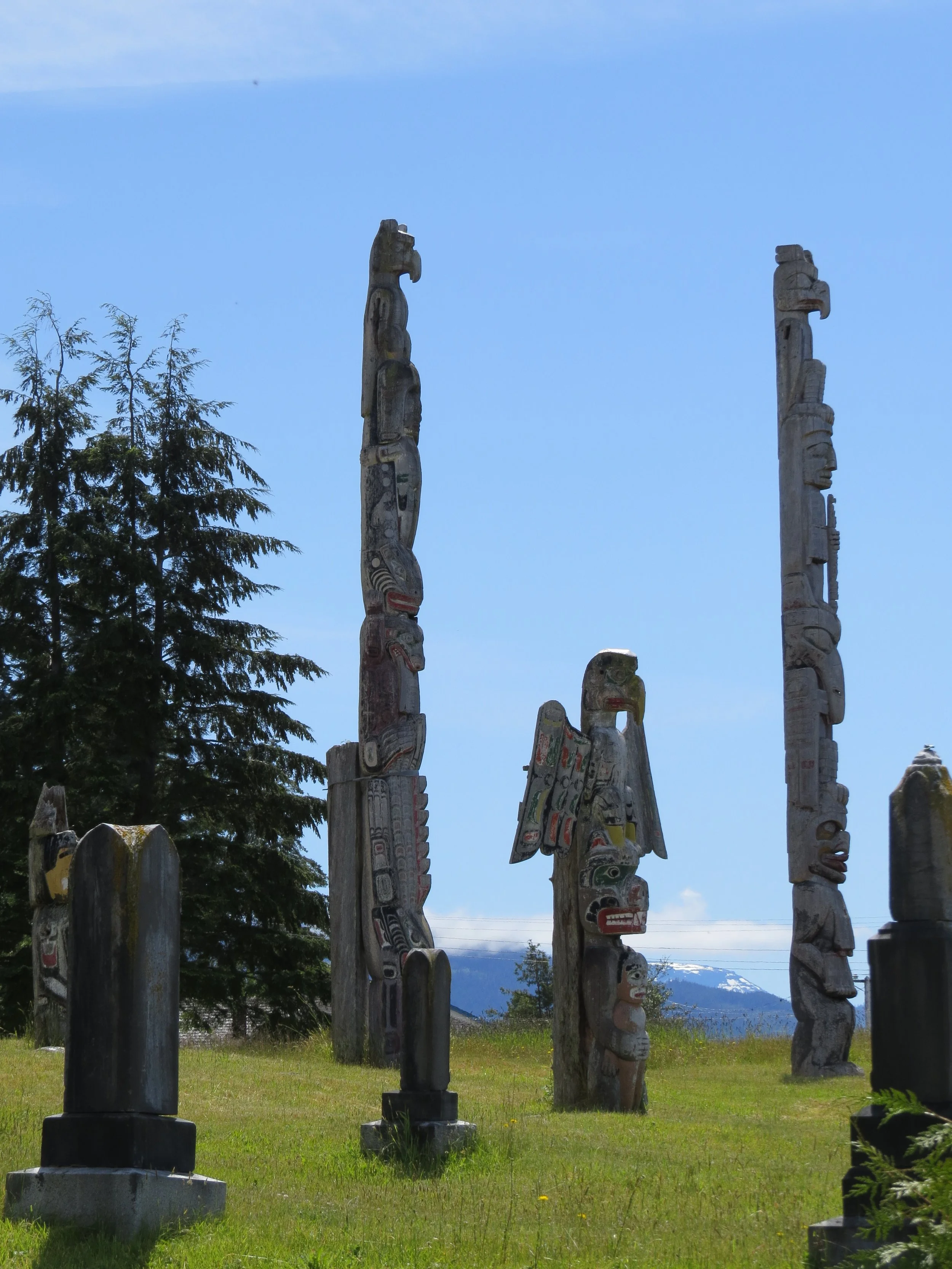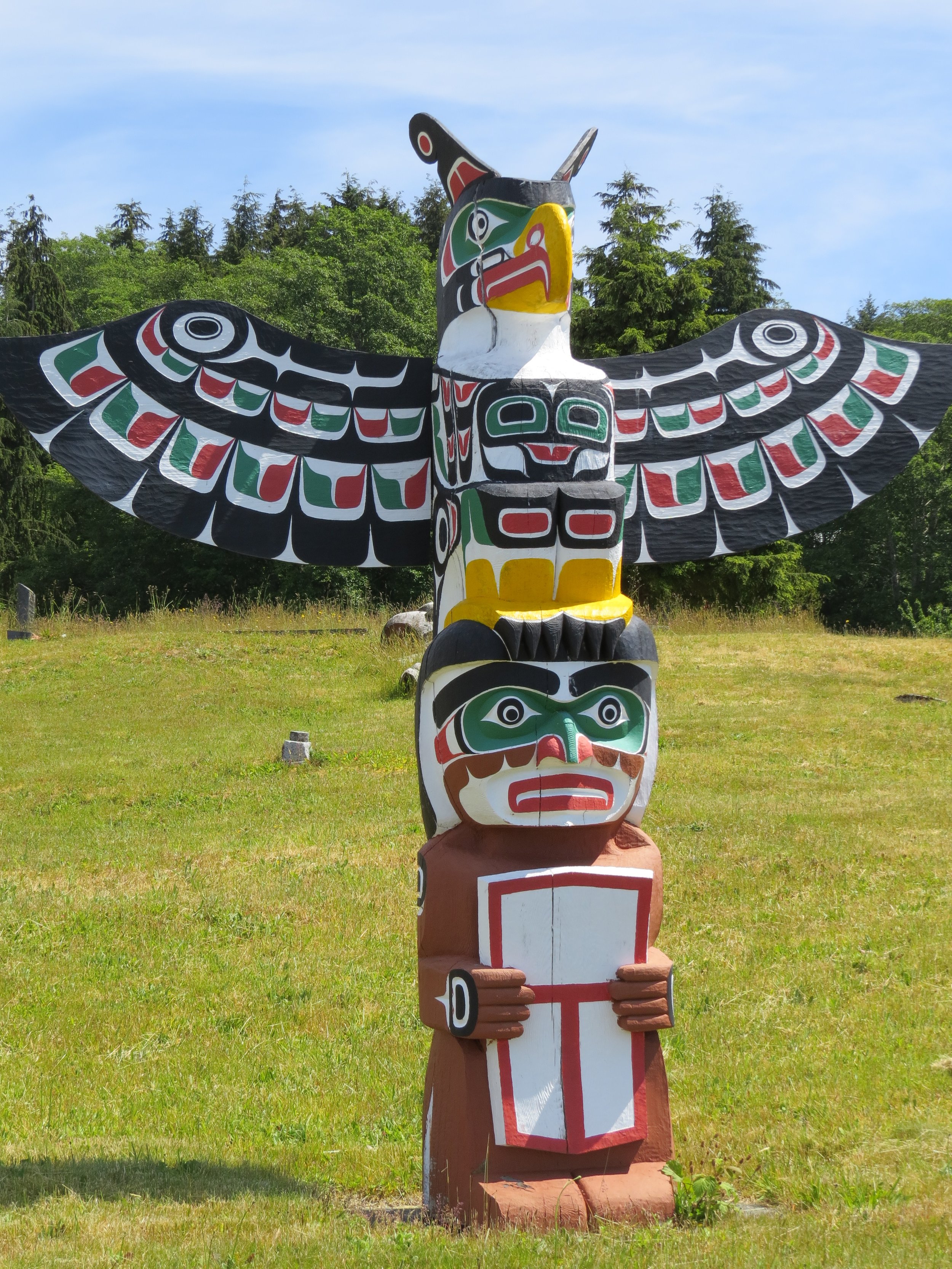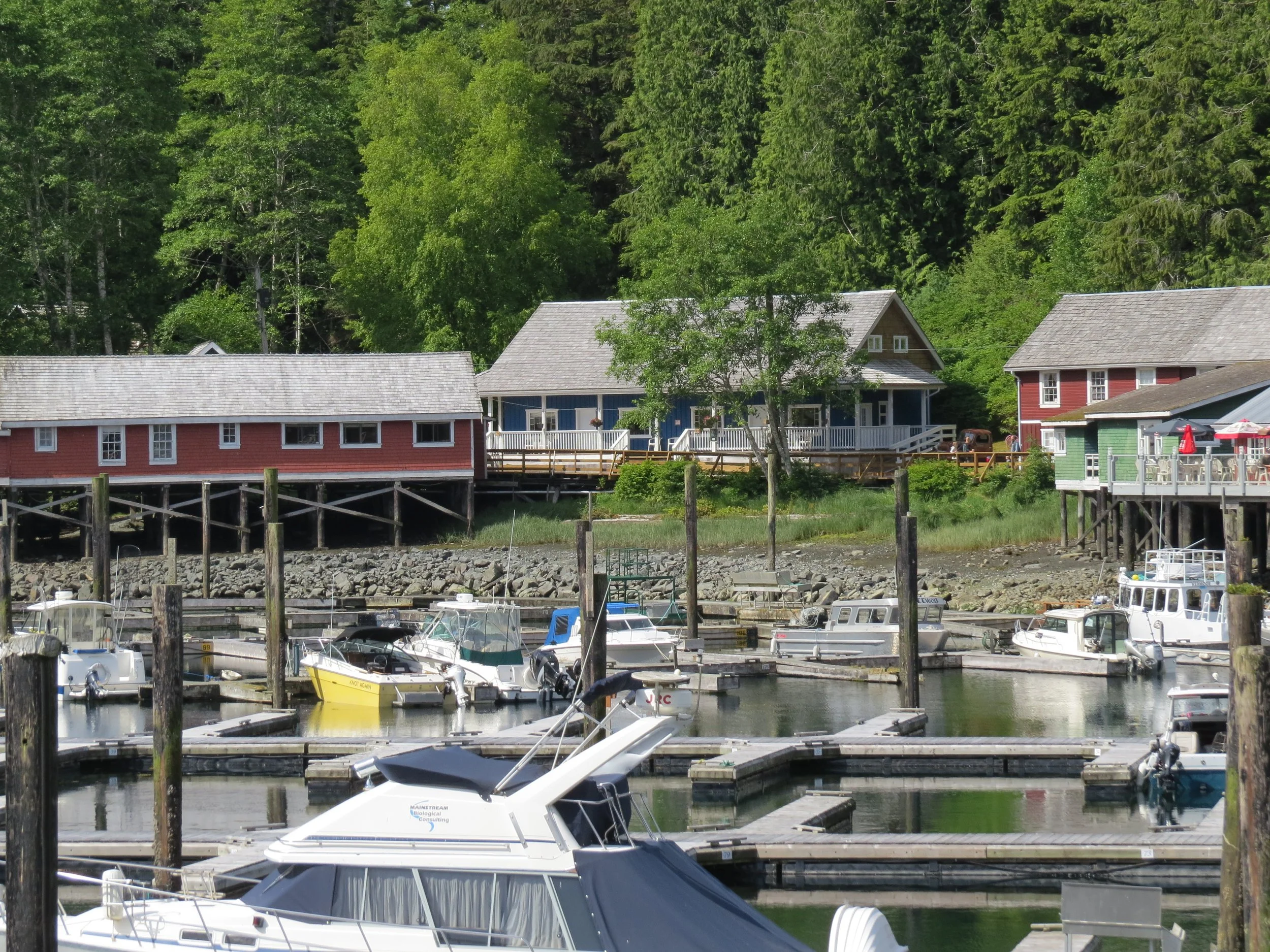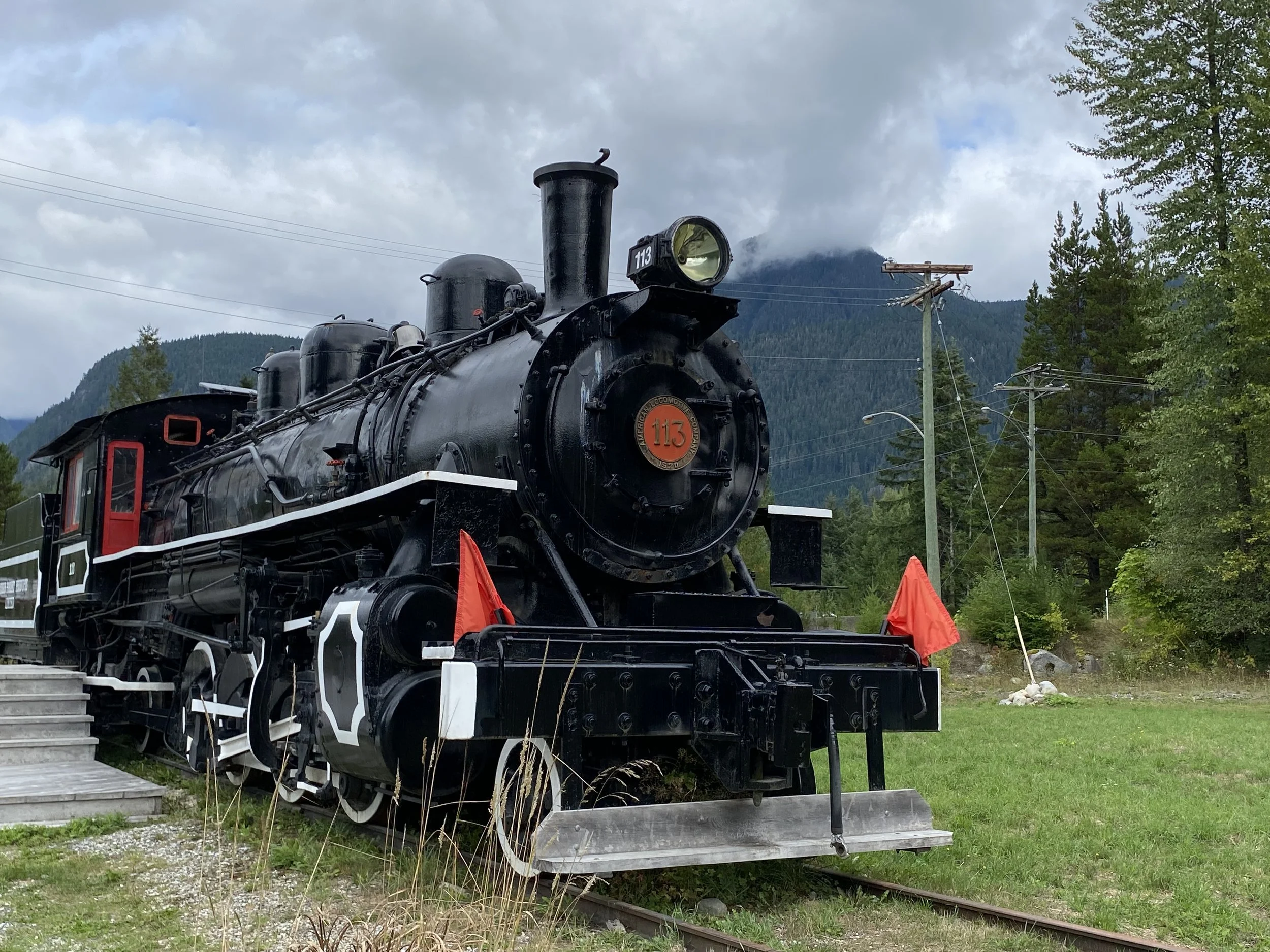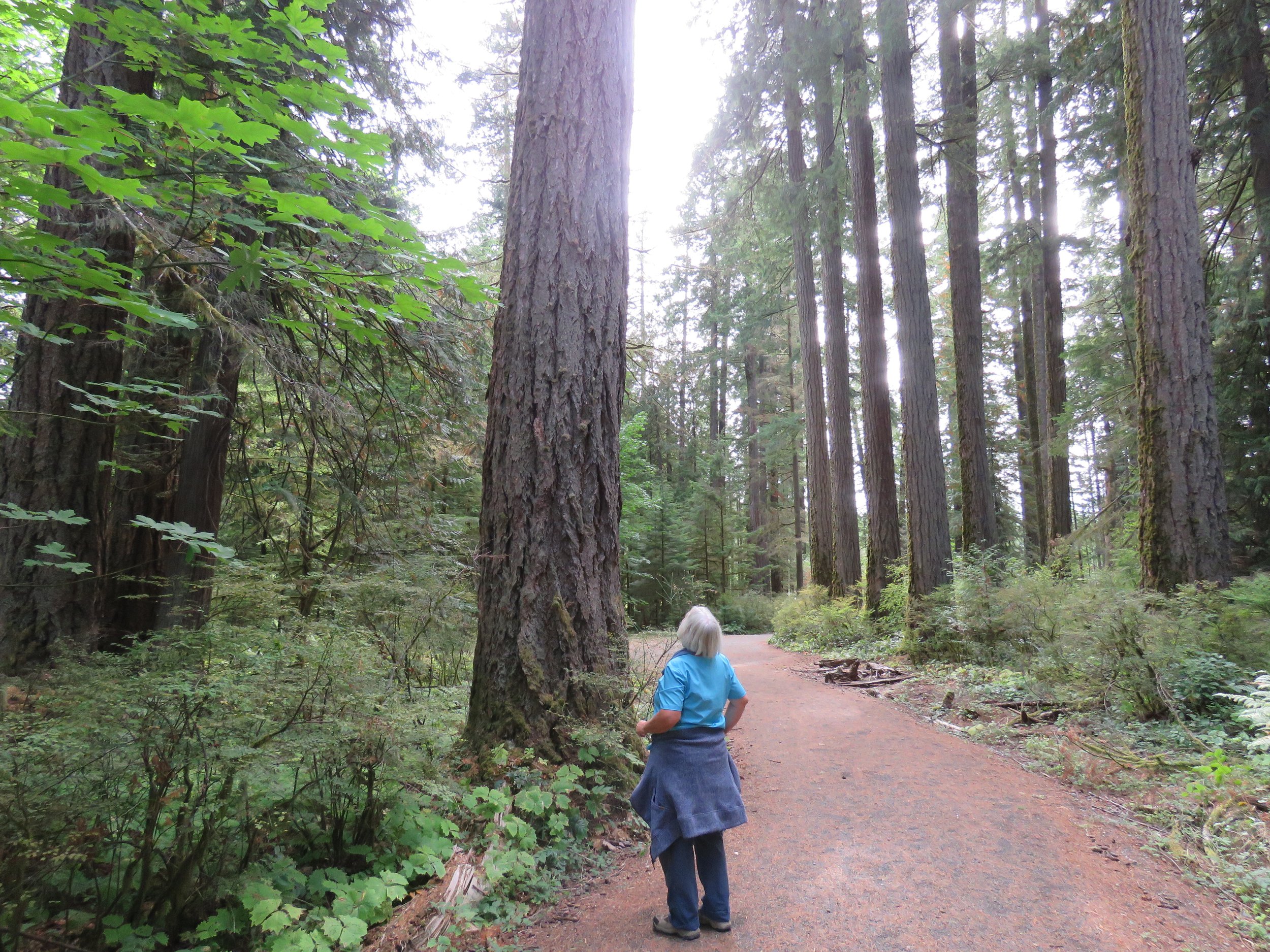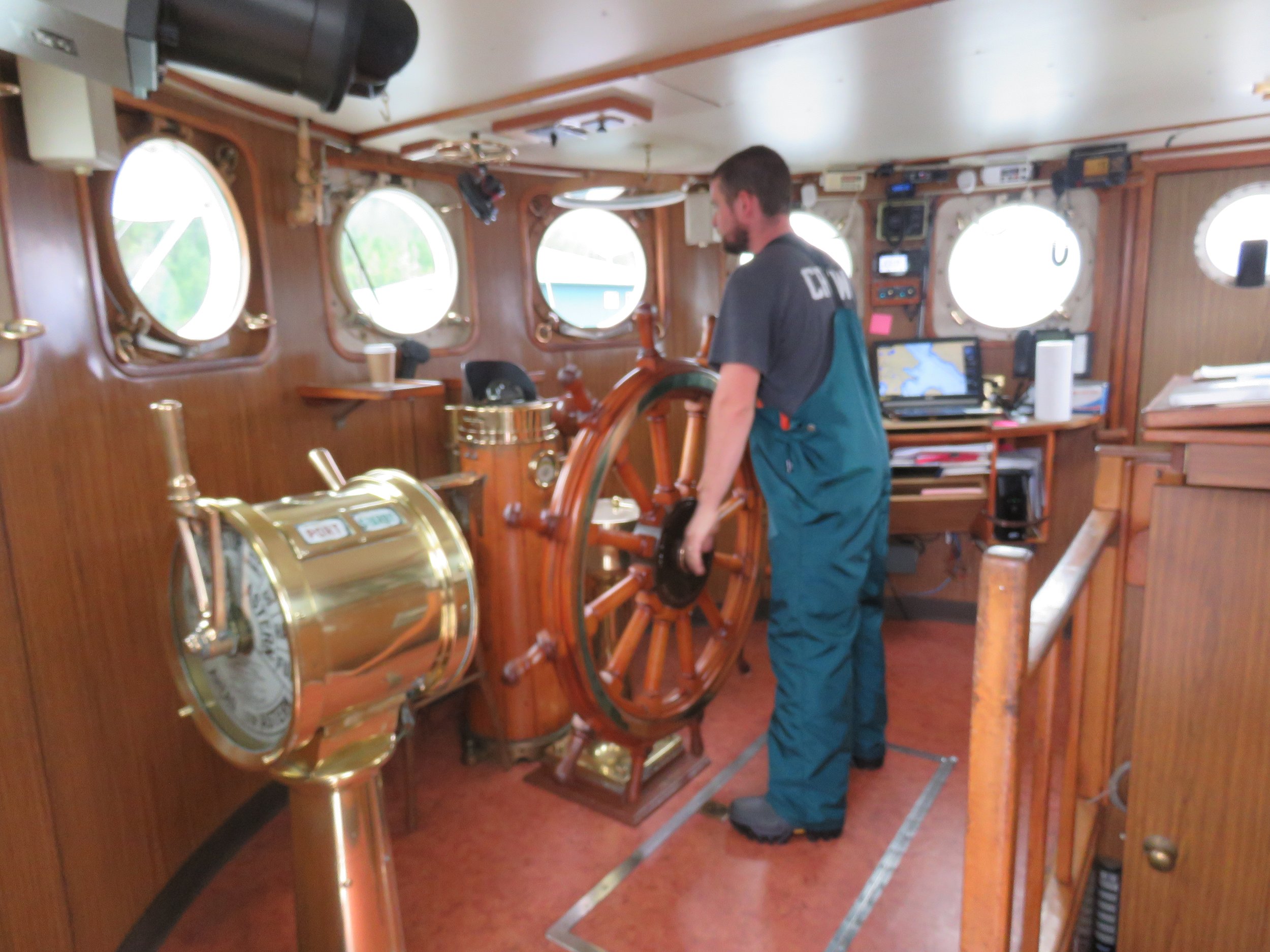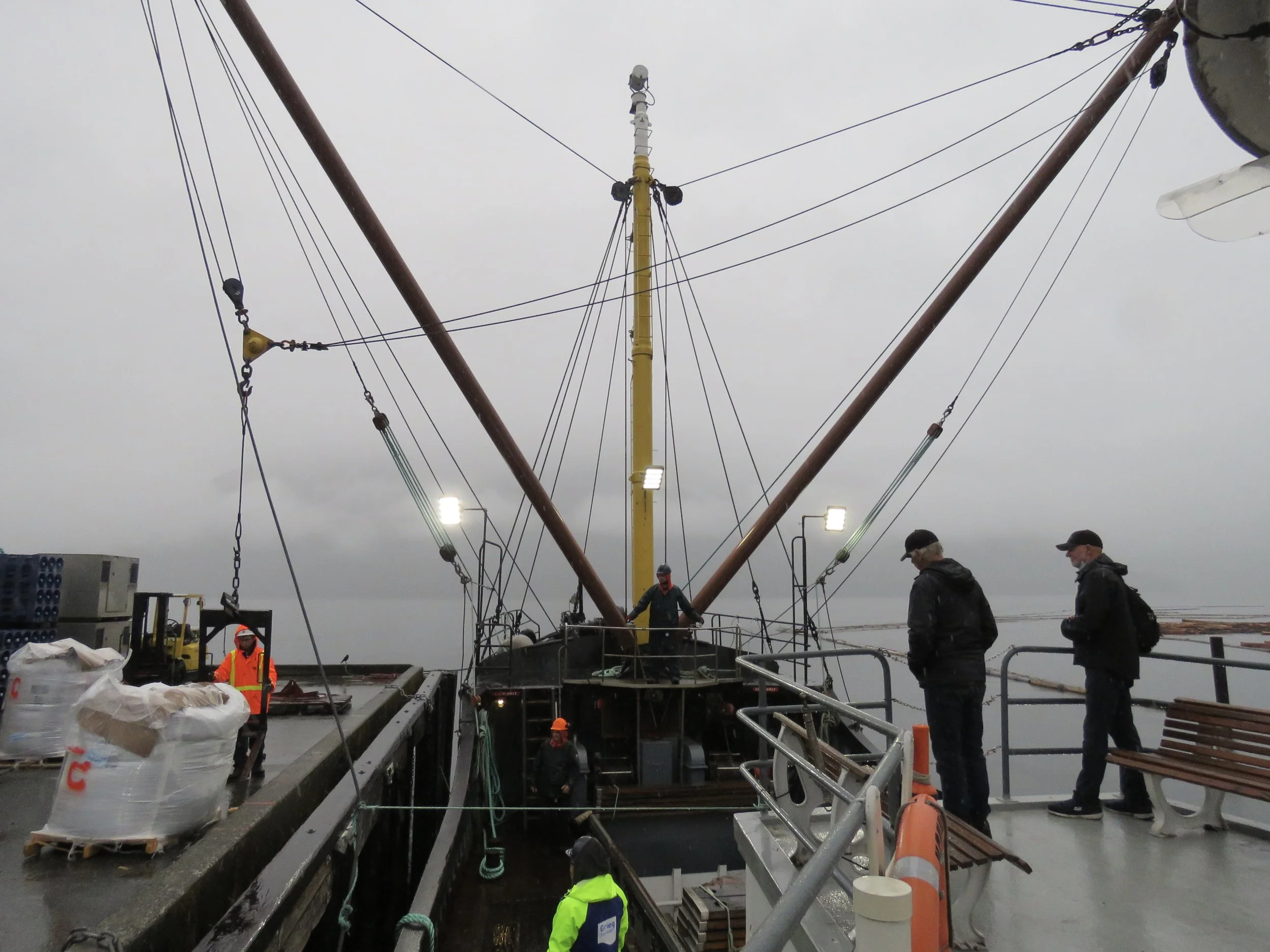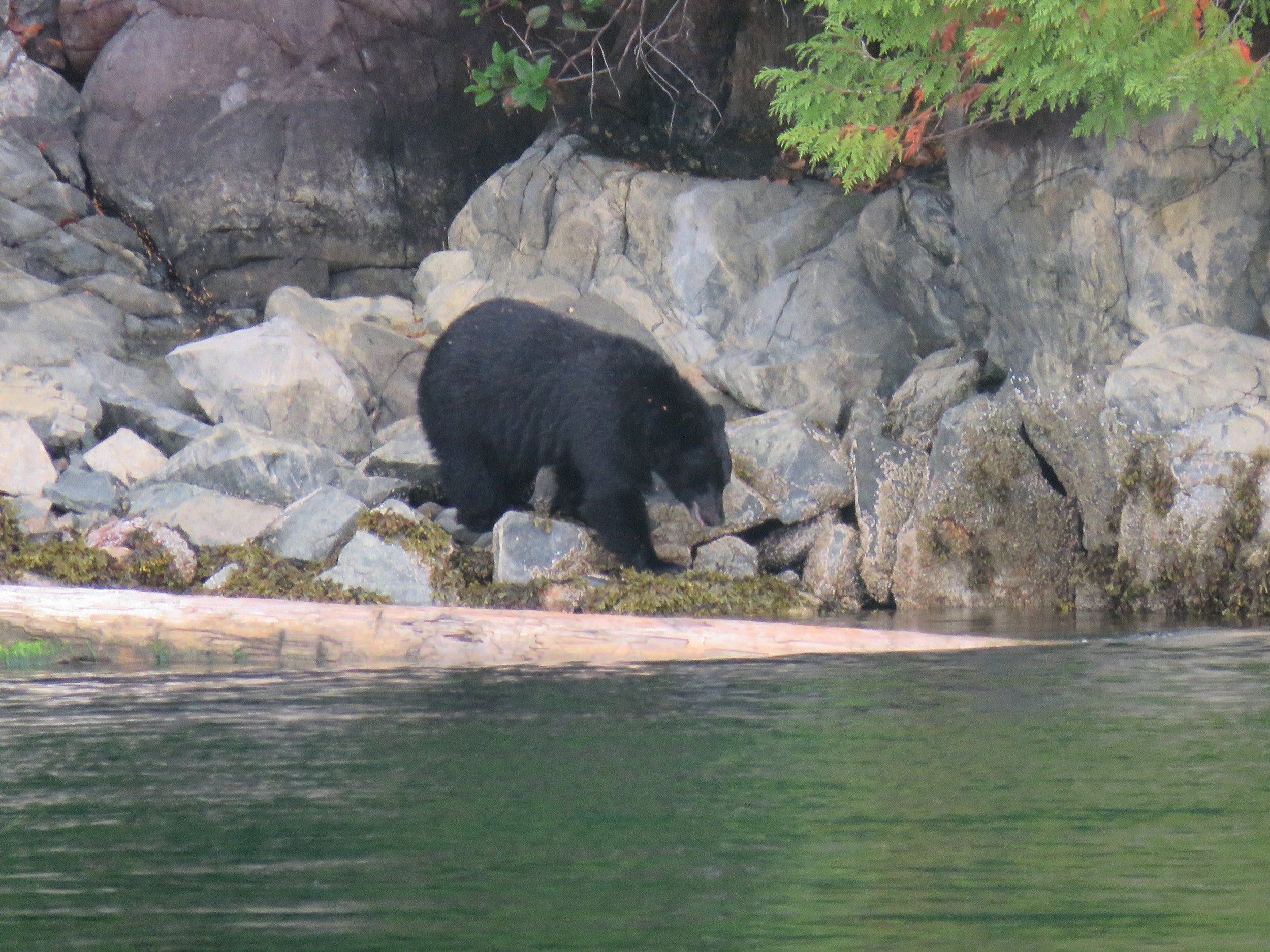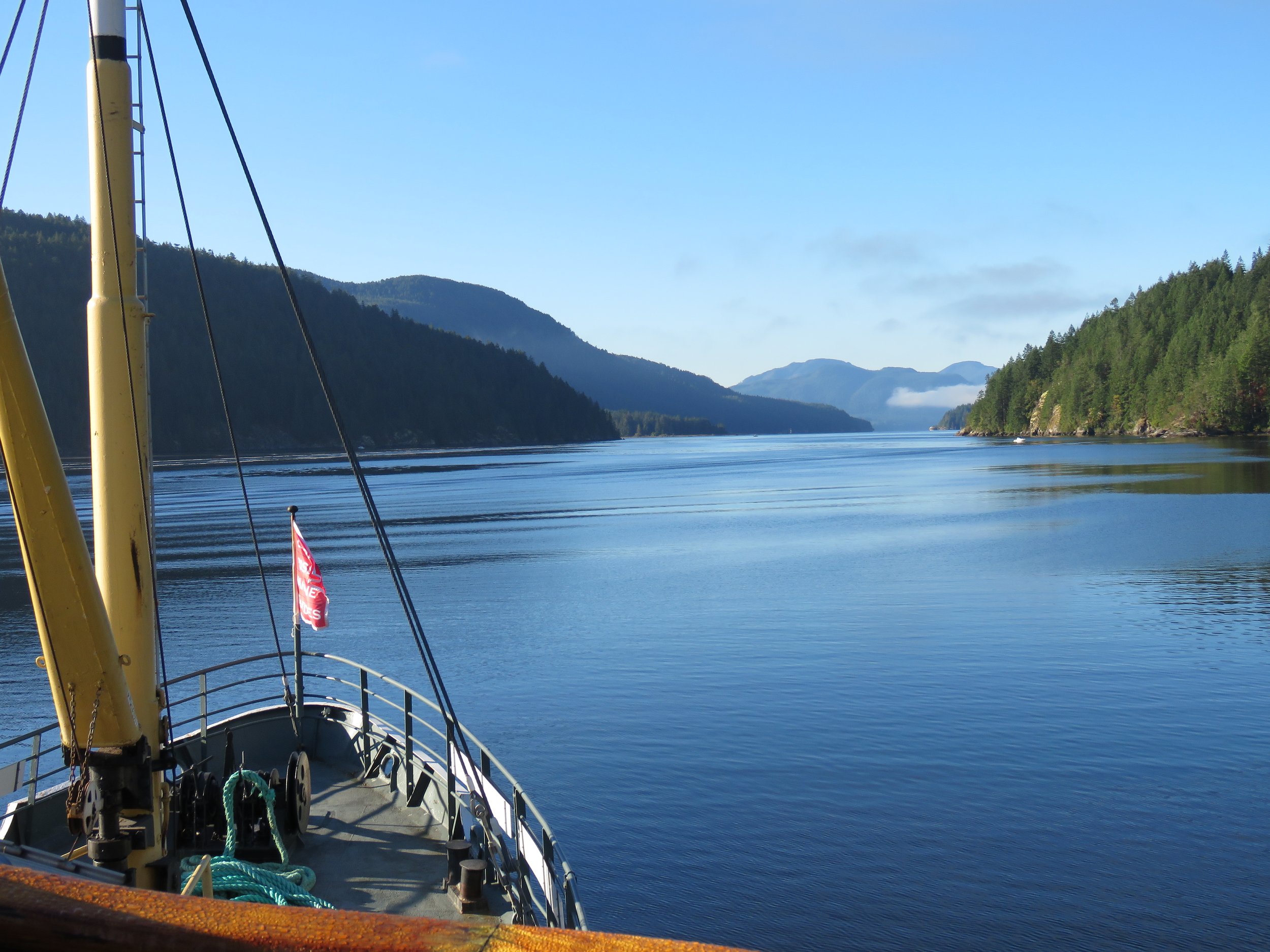While restricted to local travel during Covid, we were grateful to live a 20 minute ferry ride from varied Vancouver Island. The book Vancouver Island Vs The World compares world renowned locations to spots found on this island, from waterfalls to beaches, from cities to mountains, so we literally have the world at our fingertips here.
Our designer breakfast.
We decided to explore the northern part of the island where we knew we would not encounter many other people.
We started by driving as far north as we could: to the town of Port Hardy. After that we would slowly make our way south while making side trips, exploring places we had not visited before and also some special boat trips.
Our first overnight was a very special B&B in the remote hamlet of Coal Harbour. I was curious to see Coal Harbour because it’s where two of my favourite children’s novels are placed: Everything on a Waffle (a Newbery Honor book) and One Year in Coal Harbour by Polly Horvath. It’s a tiny little town surrounded by forest and water. And it has a unique B&B: The Inn on Stephens Bay. On the, almost, end of town along the bay, stands a large white house, its lawn trailing off to the water’s edge, bears walking by on a fairly regular basis. Our room on the second floor was small - not much larger than the bed. It did have a lovely, large deck but alas, it often rains in this place. The bedding and all of the decor down to the smallest details were in a nautical theme: a copper octopus held our toiletpaper roll, brass whale tails served as towel hooks.
But what truly set this place apart was the breakfast: one of the owners is an incredible chef and produced breakfasts that we were almost afraid to put a fork in… fresh berry parfaits, a croissant shaped like a viking ship with fried zucchini slices as sails, filled with scrambled eggs. Heaven.
“Be sure to visit the old hangar on your right,” we were told as we set out to explore in the morning. Three minutes down the road we spotted the huge building, some window panes missing. It dates back to the second World War when it was used as airplane hangar, then as whaling station. The ramshackle building is chockfull of amazing artifacts, from a room full of old telephones in every shape and size, to the history of firefighting equipment, old vehicles, whale bones and much more. The place is owned by Joey, a colourful character who will treat you to plenty of stories if you take the time to listen.
When we came ‘home’ to the B&B that afternoon, the owners offered us a huge steamed crab topped with butter. They had collected their traps and found plenty of crabs to share. There is not much else in Coal Harbour so if you plan to spend more than one night, either bring some food for dinner or you’ll have to drive the half hour to Port Hardy - which is what we did one night. We enjoyed good food in the local pub. You know you’re in a small town when… one elderly customer with a walker went out the door and the waitress went in pursuit, rolling her eyes saying “He forgot to pay…”
Fort Rupert
Fort Rupert, just south of Port Hardy, has some beautiful totem poles and carvings. After leaving “the far north” we took a side trip west to the company town of Port Alice, a neat and attractive but isolated community. From there we drove to the east coast of Vancouver Island.
We drove a bit further south to Port McNeill where we caught the ferry to Malcolm Island and the town of Sointula. There are not many places to stay overnight on this island with an intriguing, rich Finnish history but we wanted to explore for more than just the day and were glad to find a new AirBnB.
It turned out to be a nice, self contained garden cottage not far from the ferry landing, with a good bed, a couch and a small kitchen.
Sointula
We drove every single road and were glad we had watched a Knowledge Network documentary about the island. The museum, which had come highly recommended, was a bit of a let-down. Just a large room full of odd artifacts. But the whale rubbing beach on the east side and the walk to a remote lighthouse on the northern tip made up for it.
Our favourite island in this area is Cormorant Island with the community of Alert Bay. This is very much an authentic First Nations Island where pole raisings and potlatches are held. The U’Mista Cultural Centre is one of the most impressive we’ve ever seen. If you ever get a chance, be sure to visit Alert Bay and eat warm bannock at the cafeteria across from the library! You can stroll along the waterfront and visit the old cemetery with amazing totem poles. One of my favourite books takes place in this region: Totem Poles and Tea by Hughina Harold, the account of a young teacher in 1935 sent up north to teach in remote areas.
Telegraph Cove
Back on the main island, we headed south again. Telegraph Cove is a popular spot but very touristy. Basically the whole town is a resort catering to visitors from around the world. With its painted buildings and wooden boardwalks the town is very photogenic and a good place for kayaking. If you visit Telegraph Cove, be sure to see the interpretive whale center.
We kept going south to the tiny town of Woss. We had often driven by the sign to Woss, but never stopped. There’s not much to this logging community but it was fun to stop and see the historic trains on display. Apparently there’s a steam train you can ride in summer.
We turned east at the town of Sayward to visit Kelsey Bay and spent the night at Sayward Resort, a lovely old-fashioned family campground with cabins. Despite Covid, there was a community event in progress with local firetrucks on display, music and games, icecream cones and hamburgers being grilled by the Emergency Response crews.
Elk Falls Provincial Park
After Campbell River, the largest northern town, we turned west to head through Strathcona Provincial Park. First we stopped at Elk Falls Provincial Park, just outside Campbell River. The parking lot was full of cars and we were amazed at the number of hikers. Of course, this was a Covid year with many people seeking outdoor places to walk. This park was the perfect site to get exercise and see some awesome nature: huge towering trees and thundering waterfalls.
Our destination west was the town of Gold River. We stayed in a dismal motel but it was only to sleep: early the next morning we boarded the MV Uchuck. This 136-foot wooden hulled maritime vessel provides passenger and freight service through historic Nootka Sound, Esperanza Inlet, and Kyuquot Sound. We had heard that you can come along for the day (at a price) and see how the ship delivers mail, groceries, gas and propane to remote settlements. It started off as a dreary, drizzly day but later cleared up enough to be out on the deck. The fjords and islands are gorgeous and we savoured the views as we quietly cruised the grey waters from Gold River to Nootka Island - almost to the open ocean. The small galley onboard served homemade cinnamon buns and warm clam chowder. We loved watching the crew operate the characteristic loading booms to maneuver freight onboard.
MV Uchuck
The next day we drove south to Port Alberni. The distances on the island are substantial: Vancouver Island is some 460 kilometers long and roughly the same size as the country of The Netherlands. However, outside of BC’s capital city of Victoria and the city of Nanaimo, there are few traffic lights. On the northern half of the large island you’re more likely to see a bear than a traffic jam.
Port Alberni is a fair size community with lots of amenities including a good grocery store. We restocked our meal supplies and headed for another supply ship: the MV Frances Barkley. This supply ship also plies the waters towards the Pacific Ocean to deliver mail and essentials to isolated fish camps and tiny communities. At one point we stopped at a dock with one floating post office only. Locals had gathered in their dinghies to collect their orders. The sky, this day, was blue and the waters clear. It was a treat to sit in the sun and cruise along these gorgeous coastal inlets. We heard sea lions honking and spotted the occasional fluke of a whale.
At the western destination we disembarked onto the wooden boardwalks of Bamfield, a small town known for its hippy culture, music venue and marine research station. We strolled the boardwalks on the western side of town but could only longingly stare at the eastern shore. That side is accessible by road and the ship did not dock there. The only way to cross the water that divides the town into two halves, is by ordering a water taxi. What a fabulous day to spend on the coast this way. I highly recommend a trip on a supply ship to anyone. You can also opt for a multiple day trip and stay at one of the west coast lodges, i.e. on Nootka Island.
Bamfield boardwalk
All in all we took ten days to explore this rugged paradise and loved every minute of it. In a next blog, we’ll take you along as we drive and walk the southern part of Vancouver Island.
Resources:
• BC Ferries: https://www.bcferries.com/ (keep in mind that seniors travel free on weekdays, but not your car). A BC Discovery card gives you a 30% discount on all ferries.
• Inn at Stephens Bay: https://bayinn.ca/
• Sointula Island: you need to log in with a free account to see this documentary (and many others, it’s worth it!): https://www.knowledge.ca/program/150-stories-shape-british-columbia/short/e70/sointula
• Our AirBnB in Sointula: https://www.airbnb.ca/rooms/45865591?source_impression_id=p3_1649612085_SHXdAksbN2Utz6lZ
• MV Uchuck: https://www.getwest.ca/
• MV Frances Barkley: https://ladyrosemarine.com/
• U’Mista Cultural Center, Alert Bay: https://www.umista.ca/
• Telegraph Cove Whale Center: https://www.killerwhalecentre.org/
